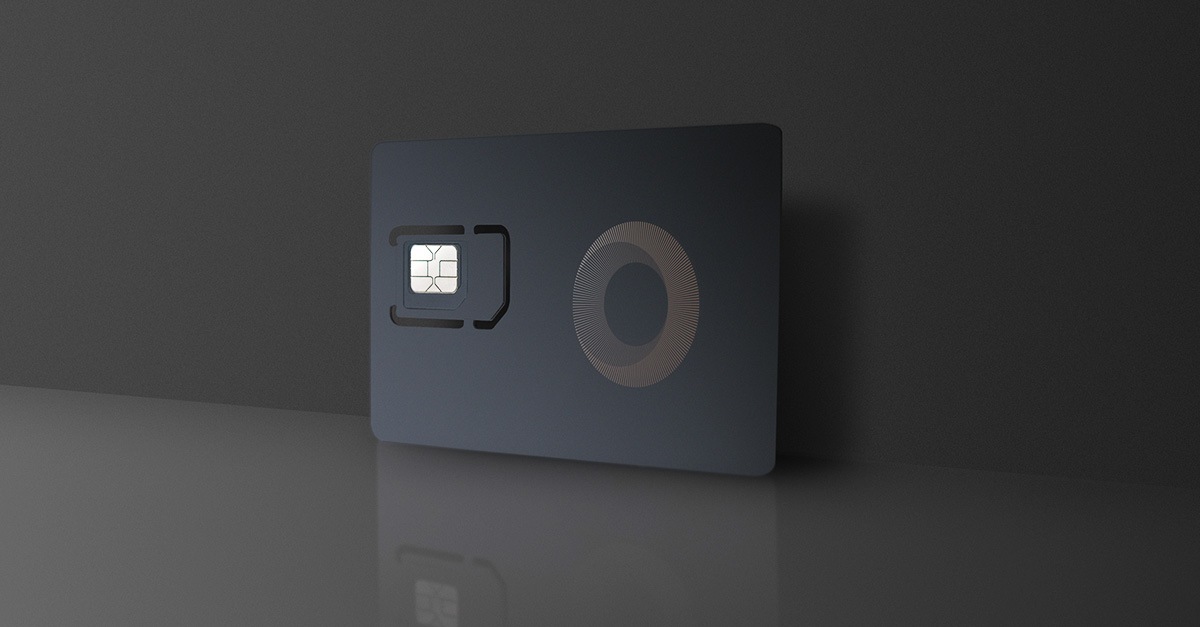IoT Connectivity Solutions Pressure on IoT Connectivity Prices
Internet Connectivity Principles In IoT Solutions and Network for IoT Connectivity

The world has witnessed a big transformation in the greatest way we interact with our living areas. Smart properties, outfitted with related devices, have risen dramatically in recognition, providing enhanced convenience, security, and energy effectivity. However, attaining seamless integration of all these devices closely depends on effective IoT connectivity options.
Various connectivity technologies facilitate communication between units, ensuring that every part of the smart home works harmoniously. Choosing the best IoT connectivity options for smart homes is essential for creating an environment friendly and responsive environment. These solutions range when it comes to vary, power consumption, and the types of units they support, permitting shoppers to tailor their smart home ecosystems to their particular needs.
Wi-Fi is considered one of the most widely used connectivity options, primarily as a end result of its ubiquitous nature and excessive knowledge switch charges. Many smart home gadgets are already designed to connect effortlessly to current Wi-Fi networks. This makes adding new gadgets relatively easy. Tablets, smartphones, and routers can often assist a number of gadgets simultaneously, making it a handy choice for smart residence enthusiasts.
IoT Connectivity Control Types of IoT Connectivity Options
However, Wi-Fi is not without its challenges. The dependence on a secure web connection can often lead to efficiency points, especially with multiple units making an attempt to communicate at once. Furthermore, the vary can be limited relying on the layout of the house. Walls and different limitations can cause sign degradation, which can hinder the efficiency of gadgets located far from the router.

Zigbee is another compelling option for IoT connectivity in smart properties. This expertise supports low-power devices, making it appropriate for battery-operated sensors and devices. Zigbee creates a mesh network, which means every linked system acts as a relay, expanding the vary of connectivity inside the home. This is especially helpful in larger areas the place traditional Wi-Fi would possibly wrestle.
IoT Connectivity Platform How Cellular IoT Connectivity Operates
Z-Wave adds to the suite of choices out there for smart homes. It operates on a decrease frequency than Wi-Fi, which means it can better penetrate partitions and avoid interference from different electronic gadgets. Z-Wave is engineered specifically for house automation, allowing numerous gadgets to interact seamlessly. The low energy consumption also aids in battery longevity for units that operate on this network.
For functions requiring low knowledge charges but excessive reliability, LoRa (Long Range) supplies a superb different. It is especially helpful for agricultural or environmental monitoring devices that only require intermittent information transmission. LoRaWAN (Low Power Wide Area Network) enables these units to speak over long distances, making it a perfect resolution for expansive properties or smart city purposes.
Cellular connectivity serves as one other robust answer, primarily for gadgets that require constant internet entry however may not be put in close to established networks. This ensures that units can ship and obtain information over the internet immediately, eliminating reliance on home Wi-Fi methods. While perhaps dearer, cellular connectivity provides the advantage of wide-reaching availability, notably in rural or hard-to-reach areas.
Bluetooth is also a major player in the realm of smart house connectivity, significantly for personal devices like fitness trackers, smartwatches, and audio system. Its low energy necessities make it an attractive choice for short-range communication. Bluetooth mesh networking enhances the protocol’s functionality, enabling gadgets to speak effectively even when separated by far.
IoT Connectivity Service Providers Top IoT Connectivity Management Platforms
Thread is a relatively newer protocol designed to make device connectivity easier. It also supports low-power units in a mesh network configuration. What sets Thread apart is its IPv6-based communication, which enables extra easy integration with internet-based techniques and companies. This adaptability opens the door for future scalability as smart residence technologies proceed to evolve. What Is IoT Connectivity?.
The integration of assorted connectivity protocols is significant for compatibility amongst units. Many companies have acknowledged that a single solution might not meet all consumer needs, resulting in multi-protocol systems that may seamlessly switch between networks. Such flexibility allows homeowners to customise their smart environments and connect devices whatever the manufacturer.

As consumers increasingly emphasize sustainability, smart homes that facilitate energy-efficient living have gained traction. IoT connectivity solutions contribute significantly to this development. Devices can communicate to optimize energy usage, adjusting click for more heating, cooling, and lighting based mostly on real-time knowledge.
When choosing the right IoT connectivity solutions for smart homes, consumers should carefully consider their specific requirements. Those prioritizing speed might lean in the direction of Wi-Fi, while people needing to increase the vary of connectivity might choose Zigbee or Z-Wave. Budget, system compatibility, and the potential for future upgrades also play a significant role in decision-making.
IoT Connectivity Definition Growth of Connected IoT Devices
Ultimately, the most effective IoT connectivity options for smart homes will improve not solely automated comfort but additionally the total dwelling expertise by incorporating superior technology into daily routines. These solutions empower homeowners to handle their environments higher and stay more sustainably, concurrently having fun with the benefits of state-of-the-art connectivity.
In conclusion, with the rapid developments in know-how, the landscape of smart residence connectivity continues to evolve. As more devices enter the market and extra homeowners embrace automation, the significance of strong connectivity solutions turns into increasingly obvious. Those who make investments time in understanding and implementing these solutions will undoubtedly contribute to creating extra intelligent, environment friendly, and enjoyable residing areas.
- Various connectivity protocols like Zigbee, Z-Wave, and Wi-Fi cater to different smart residence gadgets, enhancing interoperability and system communication.
- Mesh networking capabilities allow units to speak more effectively, expanding protection and decreasing useless zones within bigger homes.
- Low-power wide-area networks (LPWAN) present energy-efficient solutions for battery-operated units, promoting longer operational lifespans.
- The integration of edge computing ensures real-time knowledge processing, lowering latency and enhancing general system responsiveness.
- Cloud-based IoT platforms provide extensive information analytics, enabling users to optimize system usage and energy savings of their smart homes.
- Security options, corresponding to end-to-end encryption and regular firmware updates, are important for shielding smart residence data from potential threats.
- Dual-band routers can help each 2.4 GHz and 5 GHz connections, providing flexibility and improved efficiency for various smart devices.
- User-friendly cellular applications enhance the management of smart residence devices, enabling seamless interactivity and scheduling functionalities.
- Interoperability standards, similar to Matter, facilitate collaboration between completely different manufacturers, promoting seamless cross-device communication.
- 5G expertise promises ultra-low latency and higher bandwidth, probably revolutionizing smart residence experiences with faster knowledge switch rates.
What are the several varieties of IoT connectivity solutions for smart homes?undefinedThere are a number of IoT connectivity options, together with Wi-Fi, Zigbee, Z-Wave, Cellular, and LoRa. Each presents different benefits in phrases of vary, speed, energy consumption, and scalability, allowing for tailored options primarily based on particular smart residence wants.
How does Wi-Fi compare to Zigbee for smart residence devices?undefinedWi-Fi is faster and broadly used for high-bandwidth purposes, whereas Zigbee is designed for low-power, low-bandwidth tasks, making it perfect for gadgets that require long battery life. Zigbee also helps mesh networking, enhancing vary and connectivity among gadgets.
Cellular Connectivity Providers For IoT Consolidation of IoT Connectivity
What components ought to I consider when choosing an IoT connectivity solution?undefinedConsider elements like vary, power consumption, system compatibility, safety features, and the particular needs of your smart house ecosystem. Assess how many gadgets you intend to attach and their power necessities, ensuring the chosen answer supports your setup.

Are there security risks associated with IoT connectivity options for smart homes?undefinedYes, safety risks embody unauthorized entry and information breaches. It’s crucial to choose on solutions with robust encryption and common updates. Implementing sturdy passwords, firewalls, and preserving firmware up to date can significantly improve your smart home’s security - IoT Connectivity Security.
IoT Global Connectivity Overview and Definition of IoT Connectivity
Can I combine a number of IoT connectivity solutions in my smart home?undefinedAbsolutely! Many smart house systems assist integration across varied protocols, allowing units utilizing completely different connectivity solutions to work collectively seamlessly. This flexibility enables customers to optimize efficiency and compatibility.
What role does the cloud play in IoT connectivity for smart homes?undefinedThe cloud enables remote administration, data storage, and superior analytics for smart home devices. It facilitates communication between units and consumer interfaces, allowing for real-time monitoring and management from anywhere by way of web connections.
Connectivity Management IoT Importance of Connectivity-as-a-Service for IoT
How can I guarantee compatibility amongst completely different smart house devices?undefinedCheck for compatibility labels and ensure that gadgets follow widespread standards like Zigbee or Z-Wave. Research ecosystems, such as Google Home or Amazon Alexa, that support a you could check here extensive range of units, simplifying integration and management.
What is the future of IoT connectivity solutions for smart homes?undefinedThe future is leaning in the course of enhanced interoperability, improved security protocols, and the rise of 5G technology. These developments will offer sooner speeds, larger gadget density, and decrease latency, enhancing the general smart house expertise.
How can I troubleshoot connectivity issues in my smart home?undefinedStart by checking the power sources and guaranteeing units are within range of their connectivity hub. Restart routers and gadgets as wanted. Use either app diagnostics or manufacturer help sources for specific troubleshooting steps tailored to the gadgets in query.